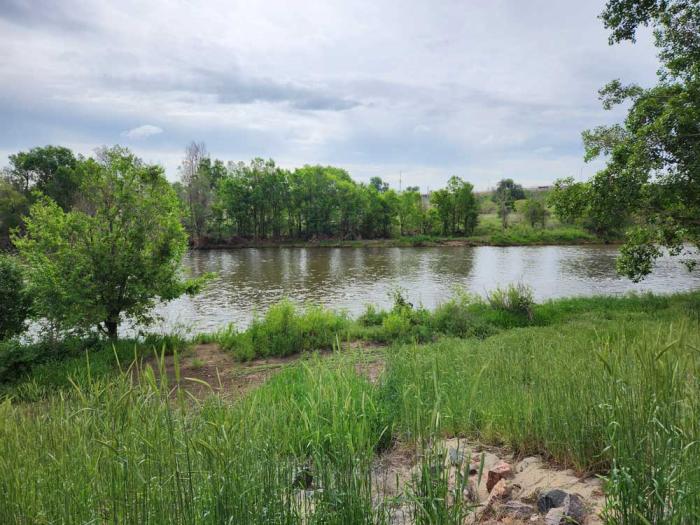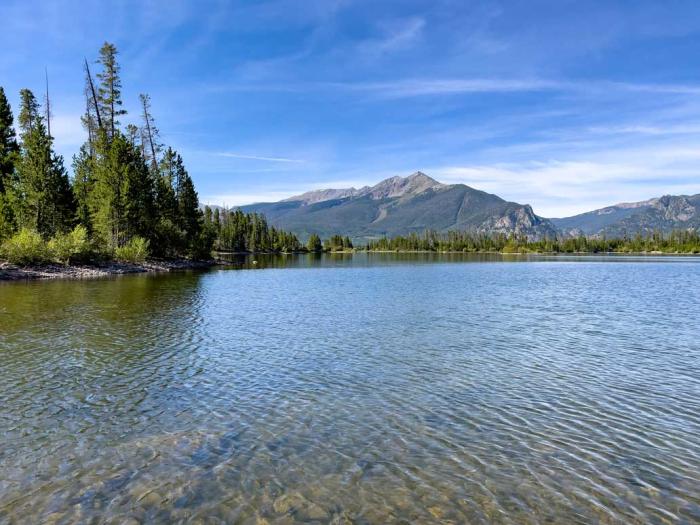What’s a ‘free river?’ A little slice of freedom for water users
As we take stock of what is shaping up to be one of Denver’s wettest years on record, it’s easy to miss an obscure datapoint when sifting through all the numbers.
60.
That’s the number of days in a row, from May 11 to July 12, that the South Platte River could be described as a “free river.” And in this context, 60 is a big number.
What’s a free river?
It’s the water wonks’ term for a river carrying so much water that anyone who has a right to water in the river can divert as much as they want from it.
It means that for 60 straight days this spring and early summer, the South Platte was so flush with rain and snowmelt that Colorado’s usual water priority system didn’t apply. There were no “senior” users and “junior” users. The water was there for the taking, no matter the date of your legal water right.
Farmers, cities and towns up and down the river, from Denver to the state line, could pull whatever they could handle from the river, whenever they wanted.
And if you know anything about Colorado and its water challenges, you know this is an unusual set of circumstances.
“A free river really means that everyone with a water right is getting enough water to supply their needs, and in our dry climate that doesn’t happen every year, or for very long, very often,” explained Nathan Elder, manager of water supply for Denver Water.
“In 2023, for 60 days, everyone along the South Platte River with a water right was able to divert enough water to meet their needs. Many filled storage reservoirs with a water supply that will likely last into future years,” he said.
Learn more about conserving water inside and out at denverwater.org/Conserve.
A free river on the South Platte also translates into big benefits for Denver Water and its customers, among them:
- Denver Water can reduce the flow of water through its tunnels that deliver water from the West Slope, leaving more water in Dillon Reservoir for recreation in Summit County and for fish and anglers in Grand County streams. That also means more water in the Colorado River Basin.
- Farmers downstream of Denver have all the water they need, so they don’t need to invoke water rights that require Denver Water to release water down the river. This allowed the utility to store and hold more in reservoirs.
- It allows Denver Water more flexibility to use water differently. For example, the utility could spill more water from Cheesman Reservoir this year to manage stream temperatures for fish in Cheesman Canyon, as well as release water from Dillon Reservoir for rafting.
- Holding more water in upstream reservoirs can have an impact that stretches into future seasons, as it makes it easier to fill those reservoirs next spring if they start with an extra cushion.
The 60-day stretch of free river in the South Platte was largely tied to a soaking spring, with Denver experiencing its 11th-wettest May and the wettest June in 150 years, driving down water use in the region to its lowest since 1969. Those months came on the heels of a solid winter snowpack and cool temperatures that slowed the melt.
How much rain? (Enough for many, many puddles.)
Records are spotty going back a few decades, so it’s hard to rank the 60-day stretch historically. It’s true that there were longer free river streaks in the last decade, but those were closely tied to the impact of the 2013 floods and the damage those did to irrigation infrastructure.
In many cases, damage to diversion structures that was done in 2013 prevented farmers from steering water out of the river for years after that, thus creating an artificially free river for long stretches as irrigators worked to restore their systems. The years 2014-16, for example, saw free river stretches in the spring and summer that exceeded 100 days.
Remembering the record-setting floods of September 2013.
Not coincidentally, those longer stretches often correlated to wetter years.
In 2015, for example, the inability of farmers to divert water corresponded with big flows on the South Platte that had water flowing into Strontia Springs Reservoir in Waterton Canyon at 211% of average.
That, combined with solid carry over reservoir storage from 2013, helped create a 102-day stretch of free river on the South Platte from April into late July 2015.
“Really long stretches of free river typically need a few elements,” Elder said. "Not the least of which is a huge wet year, like we’re experiencing in 2023.”
See how the September 2013 floods impacted Denver Water’s Ralston Reservoir:
Much more common are very long stretches where there is too little water to go around.
That’s in part because the South Platte is an “over-appropriated” river, meaning in most years there isn’t enough water in the river to satisfy the needs of everyone who holds a right to water in the river.
That’s when the “junior” and “senior” water rights come into play. Under Colorado’s water laws, the most senior — or oldest — water rights on a river are first in line to get water, then the next oldest and so on down the line to the youngest, most junior — or more recent — rights.
“Typically, anyone who doesn’t have a water right from 1900 or before that doesn’t get to divert water,” Elder said. “And in the past three years that date has been closer to 1871 with level of dryness we have experienced."
So, as we begin to assess the 2022-23 water year, which wraps up Sept. 30, don’t forget this often-overlooked metric.
A big free river was one more element of our good fortune after years of drought or near-drought conditions on the Front Range



